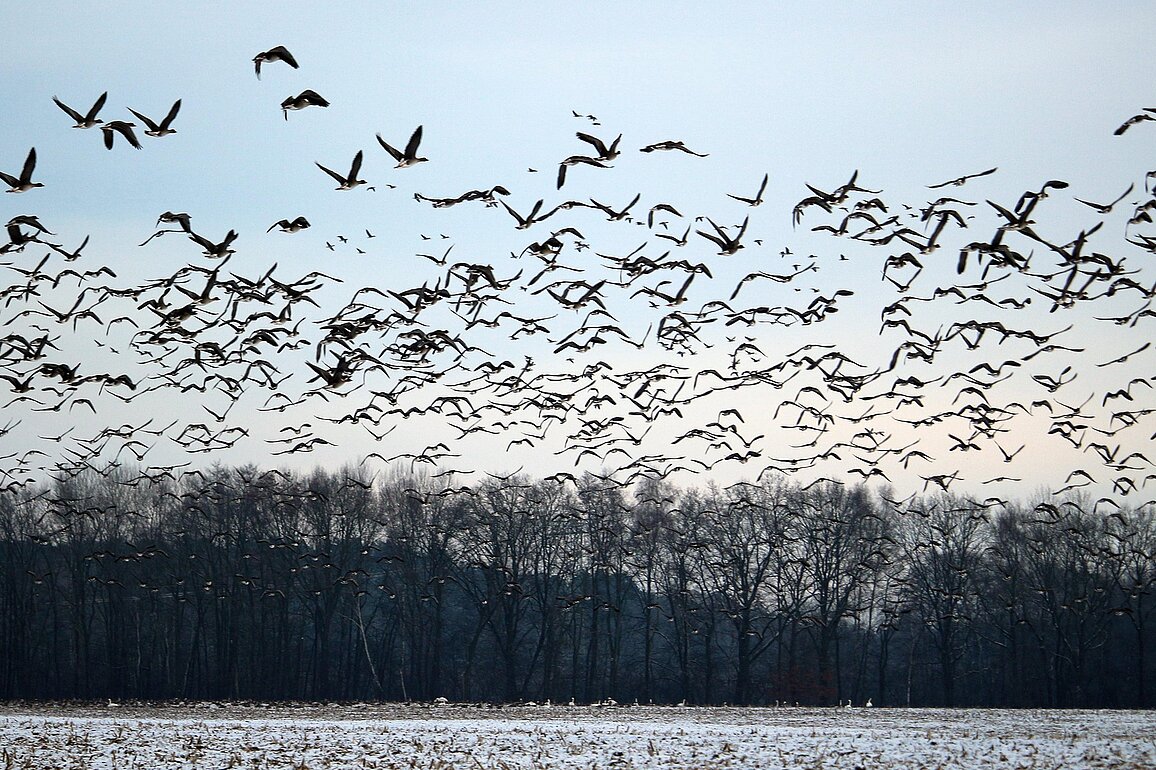NDSU Extension Helps Guide Poultry Owners Through HPAI

“It’s my job to serve the people in my county,” says Julianne Racine, NDSU Extension agriculture and natural resources agent in LaMoure County. “It’s my job to help them understand how to prevent this virus, provide resources and next steps if their flock is infected and to be a listening ear for poultry owners who are struggling with the emotions of losing birds to highly pathogenic avian influenza (HPAI).”
HPAI is an extremely contagious disease of poultry leading to high mortality. Wild birds, the main carrier of HPAI, spread the disease to new areas when migrating, potentially exposing domestic poultry to the virus. So far, North Dakota has documented 15 flocks, a total 167,000 birds, affected during the spring of 2022. In contrast, the state of Iowa has documented more than 13 million affected birds this spring.
While most of the U.S. is still experiencing cases of HPAI, NDSU Extension specialists and North Dakota animal health officials are hopeful that the outbreak is slowing in North Dakota as migrating waterfowl have made it to their summer homes. However, they caution there may be a resurgence with the fall migration.
“Throughout this outbreak, our goal has been to keep poultry owners updated with the latest biosecurity information to help prevent HPAI, help them know what to do if they suspect their flock has been infected and how to properly dispose of birds,” says Mary Keena, NDSU Extension livestock environmental management specialist.
Throughout the spring, NDSU Extension specialists sent out educational news releases about HPAI and used social media to keep people aware of changing conditions and where confirmed cases were located. Extension also gathered emails from a state-wide voluntary survey to help poultry owners stay up to-date with the latest information.
“We’ve also worked in partnership with state and federal animal health agencies to communicate with poultry owners and be the local point of contact for many people seeking information,” says Keena.
When LaMoure County had three confirmed cases, Racine estimates that she reached out to hundreds of people in her county with information. Using a map of the county, a plat book and the phonebook, she attempted to call every person within a 10-mile radius of the confirmed cases.
“We felt it was in the best interest of the general public to make them aware of the situation and to offer guidance,” says Racine. “We also have many 4-H youth in our area with birds, and we wanted them to have the best chance to continue their 4-H projects.”
She adds, “While HPAI has not been a good thing to go through, a bonus has been the opportunity to connect with people in my area. They might not have known about Extension before this, but they know Extension now.”
FOR MORE INFORMATION:
https://www.ndsu.edu/agriculture/ag-hub/highly-pathogenicavian-influenza
Julianne Racine, 701-883-6085, julianne.racine@ndsu.edu
Mary Keena, 701-652-2951, mary.keena@ndsu.edu


